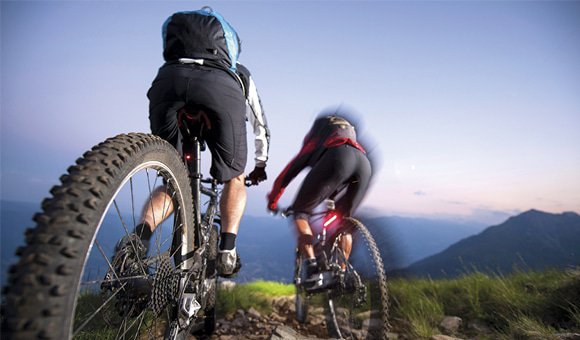The Trail To MTB
Switching from road to MTB? Or from MTB to road? Don’t worry about fitness – there’s something more important than that.
Switching from road to MTB? Or from MTB to road? Don’t worry about fitness – there’s something more important than that. – By Mark Carroll
It’s common for cyclists to cross from road to MTB, and vice versa. This has raised the question of how different training should be for road versus mountain biking. Training has two components: fitness, built from hours of pedalling at various intensities; and skills, such as group riding skills, tactics, race starts, technical bike handling, and pacing, to name a few.
FITNESS
An effective view of how well-developed fitness is for a cycling discipline is to look at the power profile of high-performance cyclists in that discipline. Producing a power profile involves doing all-out efforts for various time periods to determine aerobic and anaerobic capacity. In a recent study in Australia, some interesting findings emerged when researchers looked at high-performance road and mountain-bike cyclists – all competitive at regional and national level.
The cyclists completed every test, from five seconds to 10 minutes, during a single visit to the test laboratory. Had they divided the tests over several days, the power outputs would probably have been higher for some of the time periods; but it’s fair to assume the similarities between the disciplines would have remained.
| DISCIPLINE POWER OUTPUT (WATTS) | ||
| TIME | ROAD | XCMTB |
| 5 seconds power | 1 104 | 1 172 |
| 15 seconds power | 900 | 910 |
| 30 seconds power | 711 | 698 |
| 60 seconds power | 518 | 515 |
| 4 minutes power | 373 | 366 |
| 10 minutes power | 324 | 329 |
| Max Aerobic power | 452 | 455 |
With the exception of the five-second period stats, there is a relatively insignificant difference in the power output of both road and MTB cyclists across various time intervals, indicating that in fact, road and MTB cyclists are evenly matched in terms of fitness.
Training is designed to meet the demands of racing; these results suggest there must be significant crossover between the disciplines in how training is performed, and the effect it has on the development of cyclists’ fitness.
THE IMPORTANCE OF SKILLS
So the number-one limiter in switching from road to MTB or MTB to road is not fitness – it’s skills. This is particularly evident when you look at two countries that have a strong emphasis on skills development, particularly at youth level: the United Kingdom and Switzerland. The product of this is evident in the dominance of the Swiss at XC MTB, and the UK producing a long list of world-class road, track and downhill MTB cyclists.
For many cyclists, skills development does not get the attention it deserves – yet it can make the biggest impact on performance. If your skills are lacking, especially if you are new to cycling, look around for a local clinic or chat with your club coach. Your investment here will pay dividends; not only in your race performance, but also in your enjoyment of the sport.
BURN MORE FAT
Training at low intensities, commonly known as the ‘fat burning zone’, doesn’t mean you’re burning only fat. You’re still using both glycogen and fat for energy – you’re just using more fat than glycogen.
At low intensity, you use a higher percentage of fat relative to glycogen; as intensity increases, fat usage declines and glycogen usage increases. Despite this, at higher intensities you’re still burning more fat than you would at low intensity, because you’re using more energy overall.
To reap the benefits, you need to improve your aerobic fitness. By doing this, you’ll be able to sustain a higher power output at a lower heart rate. That means more energy expenditure – and faster fat-burning and weight loss, if that’s your goal.
Bottom line: If you train your body to sustain a higher power output, you use far more energy, from both fat and glycogen.
* Mark Carroll owns Cadence Cycling Performance & chairs the CSA Coaching Commission.
READ MORE ON: Skills training programmes workouts


